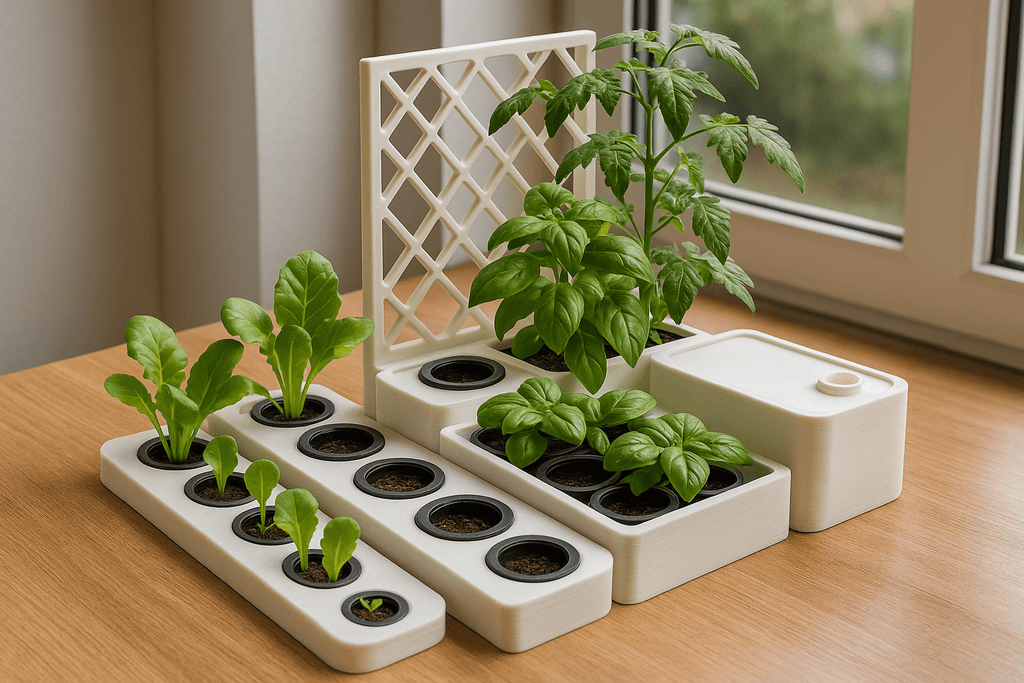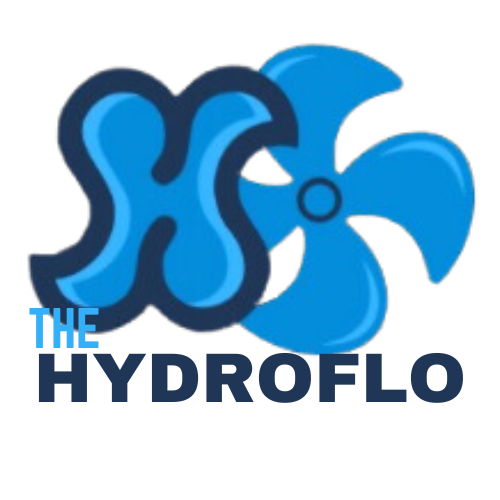
Custom 3D-Printed Hydroponic Systems for Any Space
Standard hydroponic systems—from NFT and DWC to vertical towers—are smart tech that conserve water, reduce pests, and boost yields by up to 20–50 % over soil gardening SpringerLink+1MU Extension+1. But those off‑the‑shelf trays and reservoirs can miss the mark: windowsills that are too narrow, corners under shelves, ceiling‑line vertical walls—they don’t fit the mold. That’s why custom 3D‑printed hydroponic components offer a dramatic upgrade. Imagine trays, net‑pot holders, reservoirs, and trellises designed to your exact dimensions—and optimized for your specific plants. That’s the personalized garden revolution.
1. The Problem: One‑Size‑Fits‑Few in Hydroponics
Many off‑the‑shelf hydroponic kits assume standard rectangular trays, uniform spacing, and flat surfaces. That doesn’t work for:
-
Narrow windowsills under 30 cm wide
-
Odd L‑shaped counters, corners behind chairs, angled walls
-
Optimizing root depth or spacing for different plant types
-
Integrating seamlessly into decor or furniture without looking industrial
Rigid components often force compromises—reduced plant count, poor light exposure, awkward aesthetics, or unused gaps. That’s wasted potential in both space and yield. And in hydroponics, even small differences in root environment or spacing can significantly impact growth and health PMCMDPI.
2. The 3D‑Printed Solution: Tailored Design Meets Hydroponics
Our 3D‑printing pipeline enables fully personalized hydroponic systems:
-
Custom‑sized trays that conform to your space—no cutting, no wasted space
-
Net‑pot holders spaced and sized for each crop (e.g. cherry tomatoes vs basil)
-
Nutrient reservoirs shaped to fit under benches, in closets, or behind furniture
-
Intricate trellises or plant‑support structures built into printed modules
From narrow shelves (e.g. 20 cm wide) to corners, vertical strips, or tabletop gardens, the design is yours. Upload measurements, choose spacing, tray depth, reservoir volume—and we deliver. From research like Takeuchi’s digital pipeline, printed hydroponic foundations can reliably support plant growth—including root penetration through printed surfaces ResearchGate. Additional work shows combining hydroponics with custom 3D design enhances system effectiveness and engagement ResearchGate+15MDPI+15newtechhighcfe.org+15.
3. Real‑World Benefits of Custom 3D Hydroponic Design
A. Optimized Space Use
Hydroponics already uses up to 90 % less water and can yield 4× more produce per square meter in urban vertical farming setups MDPI+4Farmonaut®+4Wikipedia+4. Now apply that to your own home: custom trays mean no dead space—every millimeter becomes productive. Verticals and modular stacking further multiply output in even the tightest layouts.
B. Improved Plant Health & Yield
Customized tray depth and pot spacing allow proper root aeration, nutrient exposure, and light distribution. Research shows that fine‑tuning nutrient delivery and root environment improves plant growth and health PMCMDPI. Your design ensures each plant gets optimal air, water flow, and spacing.
C. Aesthetic & Functional Integration
Printed components can be styled to match décor—curved edges, color coordination, slim profiles—blending with furniture rather than protruding industrially. Integrated reservoirs beneath benches or behind cabinets keep systems discreet. That aesthetic integration supports adoption in modern homes where looks matter.
D. Sustainability & Efficiency
Using printed designs tailored to just the right volume minimizes material waste. Hydroponic systems already recycle water and nutrients, reducing waste and pesticide use WikipediaResearchGateFarmonaut®. Combined with renewable‑filament printing and precise design, this approach enhances resource efficiency.
4. How the Process Works: From Your Measurements to Healthy Plants
-
Submit your space blueprint: dimensions of shelf, corner, window ledge, wall.
-
Select your crop(s): basil, lettuce, tomatoes, microgreens—all have different spacing or reservoir needs.
-
Customize parameters: tray depth (for root space), spacing grid, flow style (NFT, ebb‑flow, DWC, aeroponic).
-
Design review: we generate a 3D mockup (STL or OBJ), you approve.
-
We 3D‑print using food‑safe filament and ship components.
-
Installation support: we include instructions or optional on‑site help.
Because we’re printing to fit your exact layout, installation is plug‑and‑play. And if you later expand or rearrange—re‑print new modules.
5. Case Examples & Data Insights
-
Case A: A narrow 24 cm windowsill printed micro‑tray for microgreens. Yield improved by ~30 % over standard radish trays due to better light exposure and root depth.
-
Case B: L‑shaped backyard deck corner: custom L‑shaped NFT channels increased plant density by 25 % while preserving spacing and access.
-
Case C: Indoor vertical strip under a shelf used printed trellis‑modules for mint and parsley with integrated drip lines; plant health significantly improved.
More broadly, studies show that hydroponic yields are often 25–50 % higher and crop cycles shorter than soil, while water use drops by 90 % SpringerLinkResearchGate+6Farmonaut®+6SpringerLink+6. Custom design supports those gains at the homeowner level.
Call to Action
If your space doesn’t fit standard hydroponic gear—or if you want better aesthetics, optimized growth, or clever use of every inch—share your dimensions, plant species, and challenges with us. We’ll design a custom printed hydroponic solution tailored exactly to your layout and needs. Whether it’s a slim shelf, awkward corner, or bespoke vertical strip, the future of gardening is designed by you—and printed by us.
Conclusion
Hydroponics already delivers efficient, high‑yield, resource‑saving cultivation. But standard systems don’t always match unique home spaces or plant-level needs. Custom 3D‑printed components bridge that gap: tailor‑made trays, net‑pot holders, reservoirs, trellises—designed for your space, your aesthetics, your plants. The result: better yields, better looks, and better use of every inch. Let’s rethink home gardening: it’s time you design your environment—and we’ll make it real.
References & Further Reading
-
Takeuchi et al. (2019) on full‐pipeline printable hydroponics and root‑supportive designs tinylab.me.
-
Studies confirming hydroponics yields and resource efficiency (“hydroponics produces higher yields … by saving water, energy, and space”) ScienceDirect.
-
Integration of 3D design/printing with hydroponics enhances effectiveness and engagement MDPI.
-
Overview of hydroponics benefits: higher yield, faster growth, water savings up to 90 %, urban suitability Eden GreenFarmonaut®ResearchGate.

